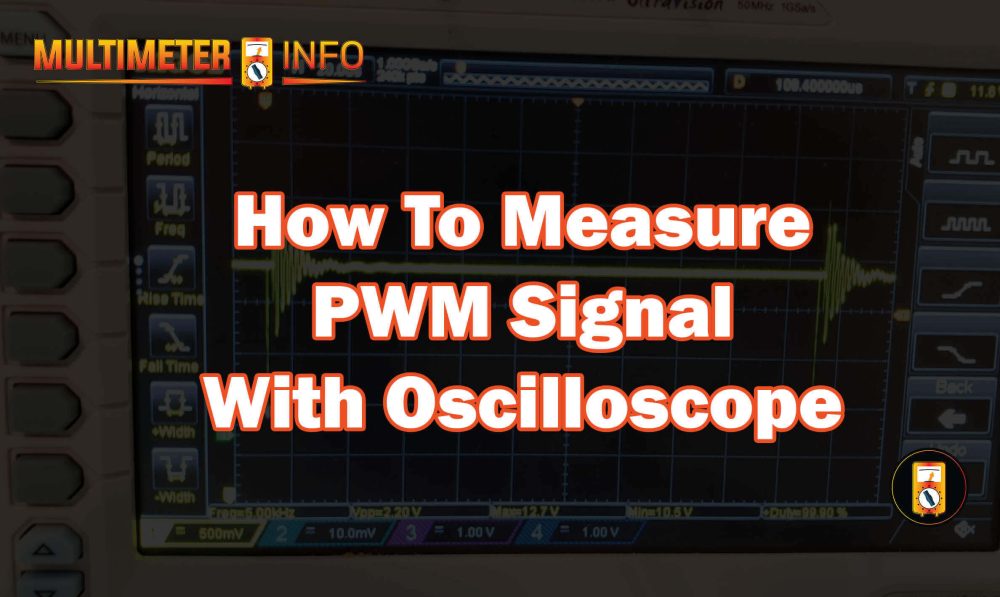Are you curious about how to measure pulse-width modulation (PWM) signals with an oscilloscope? If so, you’re in the right place. This blog post will cover the basics of PWM signal measurement and explain why it is beneficial to use an oscilloscope for this task. While measuring PWM signals is a complex procedure, we will break down each step into easy-to-follow instructions that can help even beginners become confident in their ability to analyze these vital electrical communication signals.
What is a PWM Signal?
Pulse width modulation (PWM) is a technique used to control power through the duration of a digital pulse. It works by rapidly switching between high and low states, typically of equal length, thereby creating an average voltage or power level in proportion to the duty cycle—the ratio of “on” time to the total period. PWM has applications in servos, switches, and dimmers for LED lighting, HVAC systems, motor speed control, audio, and video devices, DC-DC converters, solenoids, and sensors. Utilizing PWM technology can help minimize energy costs while operating equipment more efficiently.
The most important thing to remember when using PWM signals is that they have limited frequency ranges depending on the device being controlled. The higher the frequency, the faster the speed of control and response, but also the more difficult it is to accurately reproduce a signal. Depending on the application, PWM signals can range from very low frequencies (less than one hertz) up to very high frequencies (over 500 kHz). It’s important to ensure that the system sending and receiving PWM signals are operating within their respective limits for communication between devices to be successful.
Overall, PWM signals are an effective way to control power output without needing additional components or generating much heat. With its flexibility and ease of implementation, it has become widely utilized across many industries with varying applications such as robotics and automotive electronics. Whether used for motor control or sensor feedback, PWM is a reliable technology for transferring data and controlling power output.
How to measure the PWM signal with an oscilloscope?
Measuring pulse width modulation (PWM) signals with an oscilloscope can be done in several ways, depending on what information you need to retrieve.
- Connect the signal you want to measure to the oscilloscope input.
- Set the measuring scale on the oscilloscope so that it can accurately measure the pulse widths of your PWM waveform. This is typically done by adjusting the volts/division setting.
- Set up the trigger of your oscilloscope for a stable waveform display which will allow you to measure pulses consistently and effectively, this typically involves choosing a slope or level triggering mode and setting an appropriate threshold voltage level.
- Measure the timer period or frequency by using either Cursor measurements or the Autoset function on your scope’s toolbar to automatically set up the time per division setting to get accurate period measurements on your signal. Turn on cursors or digital readouts. Many oscilloscopes can display digital cursor measurements that can be used to measure pulse widths, duty cycles, and more.
Finally, you can use the scope math functions such as addition, subtraction, multiplication, and division to calculate more complex waveform parameters such as duty cycle ratios or frequency. Now that you know how to measure PWM signals with an oscilloscope, you should be able to analyze and interpret any waveform of your choice with increased accuracy and confidence!
Tips and tricks for measuring PWM signals:
- When measuring PWM signals, it is important to use an oscilloscope that has a sampling rate that is sufficient for capturing the pulse width of the waveform. Generally, you should use an oscilloscope with a minimum sample rate of 1 GHz or higher.
- Use triggering wisely when measuring PWM signals as this will allow you to capture and analyze only relevant information within the period of interest.
- Familiarize yourself with the various types of triggering options available on your oscilloscope and select one which best suits your current application.
- Make sure to set up proper scaling for both time and voltage when using your oscilloscope so that you can accurately measure pulse widths on screen.
- Take advantage of the zoom and pan capabilities available on your oscilloscope so that you can isolate individual pulses for more precise measurements.
- Utilize PWM-specific settings like duty cycle markers to accurately measure pulse widths with greater precision.
- Invest in dedicated PWM measurement instruments such as frequency counters, which may provide useful information about the frequency of your signal or even its voltage level at any given point in time.
- Be aware of factors like noise interference, temperature changes, and power supply variations which could lead to inaccurate readings when measuring PWM signals, and always make sure to take a few tests runs before deciding on a final result.
Following these tips and tricks will help you get the most accurate measurements from your PWM signals. By understanding how to effectively measure PWM signals, you can ensure that your designs are working as intended and avoid potential problems down the line. With these tips in mind, you’ll be able to confidently measure PWM signals with a high degree of accuracy.
Frequently Asked Questions:
Measuring PWM signals with an oscilloscope offers several benefits, including the ability to accurately determine the duty cycle, rise/fall times, and frequency of the signal. It also allows you to quickly identify any noise or other irregularities in the signal that may have gone undetected otherwise. Additionally, it makes troubleshooting simpler since you can easily view any changes in pulse widths at a glance.
PWM (pulse width modulation) is a type of DC signal. It consists of regularly pulsing “on” and “off” states, but there is no AC content or RMS values associated with it.
The voltage of a PWM signal is determined by the ratio between its high and low states. The average voltage over time would be halfway between 0 and 5 volts (2.5V). That said, when measuring a PWM signal with an oscilloscope it can be difficult to see what the actual pulse widths are due to the wide range of frequencies they can have. However, there are a few methods that can be used to accurately measure the duty cycle or frequency of the signal.
Final Note:
In conclusion, Measuring PWM Signal with an oscilloscope is not a difficult task. It can be done easily with the right tools and understanding of the signal being measured. With a few basic steps, you can accurately determine the frequency, duty cycle, and amplitude of your PWM Signal. After the measurements are taken, you can compare them to the signal specifications and determine if your PWM is functioning correctly. With a few basic steps, this simple task can save time and diagnose problems with motors, actuators, and other devices.





